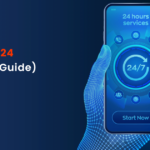In 2025, open-source databases like PostgreSQL, MySQL, and MongoDB have quietly become a trusted part of many large organizations’ data strategies. What started as community-driven tools are now being used by banks, tech companies, and even government teams , not just because they’re cost-effective, but because they’ve grown to offer the reliability, features, and flexibility businesses need today.
This blog takes a closer look at how open-source databases have evolved, why so many companies are choosing them now, and what makes them a good fit for modern, cloud-friendly environments.
We’ve also shared how partners like Simple Logic can help organizations make the shift confidently , with the right planning, support, and focus on performance and security.
Open source isn’t just a smart option anymore, for many, it’s become the natural choice.
- Open-Source Databases Are Now Everywhere
In 2025, open-source databases are not just popular , they’re almost everywhere. A recent OpenLogic report found that 96% of companies are now using open-source software as part of their regular operations. And more than one in four said their usage has grown a lot in the past year.
One of the biggest reasons for this growth? Databases.
Companies of all sizes , from banks to tech startups , are now choosing open-source databases like PostgreSQL, MySQL, and MongoDB to run their applications and store critical data. And this shift isn’t happening because of buzzwords or trends. It’s happening because these tools now offer exactly what modern businesses need: robust performance, the ability to grow easily, reliable support, and better control over costs.
As companies move more systems to the cloud and aim to build faster, more flexible platforms, open-source databases have become a smart, proven choice , not just a budget-friendly one.
- Smarter Cost Management with Open-Source Databases
Let’s talk about cost – one of the biggest reasons companies explore open-source databases.
Traditional databases like Oracle or SQL Server often come with high licensing and support fees that grow every year. In comparison, open-source databases like PostgreSQL and MySQL are free to use under open-source licenses, meaning there’s no upfront cost to start using them.
However, it’s important to understand that “free” doesn’t always mean zero cost. Businesses still need to plan for things like support, consulting, training, and operational overhead , especially in production environments.
That said, many companies still find open-source databases more affordable overall, especially when:
- Applications don’t require advanced enterprise-only features
- They are running internal tools, analytics platforms, or microservices
- They want to avoid vendor lock-in or future cost spikes
By carefully choosing which workloads to migrate, businesses can reduce their total cost of ownership (TCO) while still getting solid performance, security, and reliability.
The goal isn’t to move everything all at once . it’s to make smart, well-informed decisions about what to migrate and when. That’s where experienced partners like Simple Logic can provide the right guidance and support.
- Feature-Rich and Ready for Modern BFSI Workloads
Open-source databases have matured a lot , not just in terms of stability, but also in the kinds of features they now offer. For BFSI organizations dealing with sensitive data, regulatory needs, and high-volume transactions, this is especially important.
Here’s a quick look at what’s available today:
PostgreSQL now supports:
- ACID compliance, which ensures reliable, consistent transactions , critical for banking and finance.
- Horizontal scaling through extensions like Citus, which helps when data volume grows rapidly.
- Advanced indexing and full-text search, useful for reporting and analytics.
- JSONB support, allowing hybrid relational and document data , great for flexible data modeling.
- Foreign Data Wrappers, enabling connections to other systems like Oracle or MongoDB, useful in hybrid environments.
MariaDB (a MySQL fork) adds:
- Improved security and encryption features out of the box.
- Galera clustering, offering high availability , a must for 24/7 financial operations.
- Enhanced performance optimizations for heavy read/write workloads.
MongoDB, widely used for NoSQL:
- Handles large, fast-changing datasets , useful for fraud detection, mobile banking logs, or customer profiling.
- Supports real-time analytics and time-series data, common in financial monitoring and compliance reporting.
Most importantly, these databases integrate well with modern architecture , including microservices, containers, and Kubernetes. That means your teams can build secure, scalable systems that align with your digital transformation goals.
What this means for decision-makers:
- You don’t have to compromise on features or performance to adopt open source.
- The tech is ready to support core banking, payment systems, regulatory reporting, and customer analytics , if designed right.
- With the right architecture and support, open source can power mission-critical workloads while offering more control and cost flexibility than traditional licenses.
- Security You Can Trust – With Compliance Built In
There’s a common belief that open source might not be as secure as commercial databases, but that’s no longer true. In fact, most modern open-source databases now come with strong, enterprise-grade security features right out of the box.
They support essentials like:
- TLS encryption to protect data while it’s moving between systems
- Transparent Data Encryption (TDE) to keep stored data safe
- Role-based access controls to manage who can see or change what
- Audit logging and native security plugins to track activities and meet internal policy or audit needs
These capabilities help organizations meet strict compliance requirements, whether it’s GDPR, HIPAA, PCI-DSS, or sector-specific frameworks like those in banking and insurance.
And there’s an added benefit , because the code is open, security teams can review it directly, apply patches quickly, and stay ahead of emerging vulnerabilities. This kind of transparency gives teams more control over their environment, instead of waiting on a vendor for updates or fixes.
In short, open-source databases today are not just “secure enough” , they are fully equipped to support the data protection needs of even the most regulated industries.
- Cloud-Ready and Free from Vendor Lock-In
One of the biggest strengths of open-source databases today is how well they fit into modern cloud environments. In fact, they’re not just cloud-compatible , they are often the preferred choice when building flexible, future-ready architectures.
All major cloud providers , like AWS (Amazon RDS for PostgreSQL), Google Cloud (Cloud SQL), and Azure (Flexible Server for PostgreSQL) , offer fully managed services for popular open-source databases. This means teams can focus on building and running applications, while the cloud handles backups, patching, scaling, and availability.
This flexibility also supports multi-cloud and hybrid strategies, where workloads can run across different platforms , or even partly on-premises , without being locked into a single vendor’s ecosystem.
And because open-source databases are built on open licensing models, there is no dependency on one provider or software company. This is especially valuable for organizations that want more control over their infrastructure, avoid long-term commercial contracts, and keep their technology choices adaptable as needs change.
For CIOs, CTOs, and infrastructure teams, open source offers a level of freedom and portability that’s hard to match , while still delivering the scale and performance needed in the cloud.
- Trusted by Leading Enterprises – Across Industries
Open-source databases aren’t just used in test environments or by small tech teams anymore , they are being adopted by some of the world’s largest and most trusted organizations to run real, high-stakes workloads.
For example:
- Banks like JPMorgan Chase and Capital One are using PostgreSQL and other open-source tools to modernize their legacy systems and speed up how their teams build and deliver new features.
- Global tech companies like GitLab, Uber, and Netflix rely on databases like PostgreSQL and Cassandra to handle massive amounts of data , across millions of users , every single day.
- Even government departments and public health organizations are choosing open source to improve data security, reduce licensing costs, and maintain control over where and how their data is stored.
These examples show that open source isn’t just “good enough” , it’s battle-tested at scale. Whether it’s finance, healthcare, public sector, or technology, organizations are using these databases to run everything from customer platforms to compliance systems.
It’s a clear signal that open-source databases have earned their place in serious, enterprise-grade environments , not just as an alternative, but as a trusted foundation for innovation.
- How Simple Logic Helps Make Open-Source Work for You
Even though open-source databases are mature and widely trusted, making them work smoothly in an enterprise setting still takes the right planning, expertise, and long-term support. That’s where a consulting partner like Simple Logic can really make a difference.
At Simple Logic, the focus is on helping organizations adopt open-source databases the right way , with a balance of flexibility, performance, and governance. Whether a company is just starting to explore open source or looking to scale an existing setup, Simple Logic offers hands-on support across every step of the journey.
Here’s how we help:
- Seamless Migration : We migrate your databases from Oracle, SQL Server, or other platforms to open source with minimal disruption and full data integrity.
- Cloud-Ready Architecture : We design scalable, secure database environments for on-prem, cloud, or hybrid setups.
- High Availability & DR Setup : We ensure your systems are always available with HA/DR configurations that match business-critical SLAs.
- Security & Compliance : We apply industry best practices for encryption, access control, patching, and audit readiness , tailored for standards like RBI, PCI-DSS, GDPR, and more.
- Performance & Cost Optimization : We monitor and tune your database workloads to ensure smooth performance and better cost control.
- Ongoing Management & Support : We provide 24×7 monitoring, incident handling, and regular maintenance , so your IT team can focus on growth, not firefighting.
We help companies , especially in regulated industries or sector like BFSI , confidently move to and manage open-source databases like PostgreSQL, MariaDB, and MongoDB. Whether you’re just starting to explore open source or ready to scale it across your organization, we offer end-to-end support to guide you at every step.
With Simple Logic, you’re not just adopting open source , you’re building a future-ready, enterprise-grade database environment that’s secure, stable, and built for scale.
If you’re planning to reduce license costs, modernize legacy systems, or build new digital platforms using open-source databases , we’re here to help you do it right.
Frequently Asked Questions About Open-Source Databases for Enterprises
Q1. What are open-source databases for enterprises?
Open-source databases for enterprises are scalable, secure, and cost-effective database systems used by businesses instead of proprietary software.
Q2. Are open-source databases reliable for enterprise workloads?
Yes, many open-source databases like PostgreSQL, MariaDB, and MongoDB offer enterprise-grade features such as clustering, replication, and performance tuning.
Q3. Why are enterprises shifting to open-source databases in 2025?
Because they reduce licensing costs, increase flexibility, and provide cloud-native capabilities—ideal for modern enterprise architecture.
Q4. Which open-source databases are commonly used in enterprise environments?
Popular ones include PostgreSQL, MySQL, MariaDB, MongoDB, and Apache Cassandra.
Q5. Can open-source databases for enterprises be supported commercially?
Yes, many providers offer managed services, support plans, and SLAs for enterprise-grade open-source deployments.




